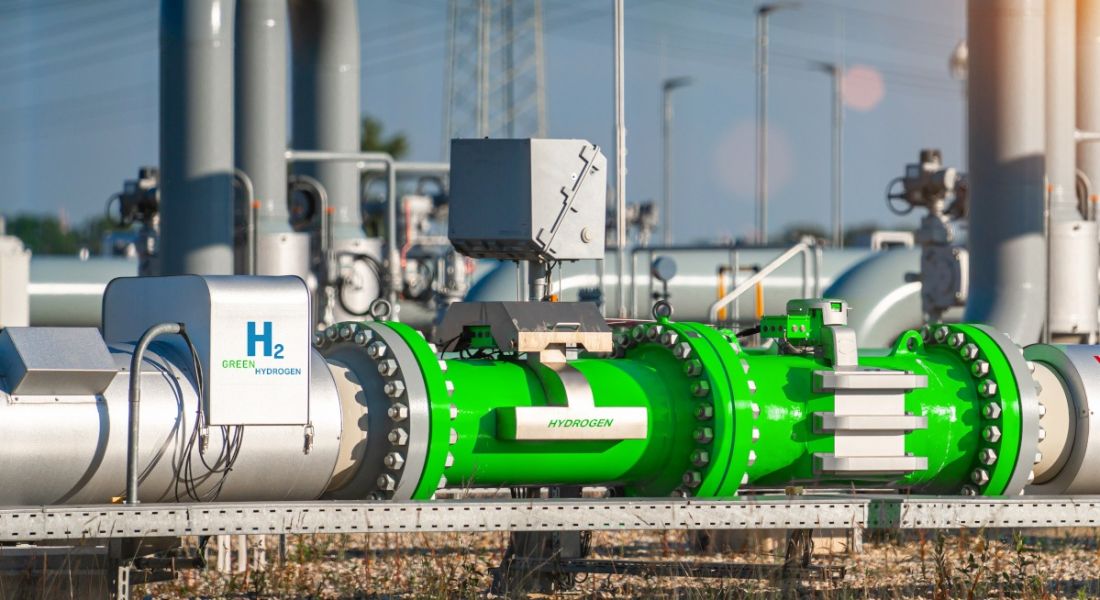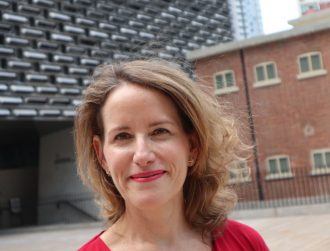While climate leaders are gathering at COP28, Sunfire’s Tilo Suckow is on a mission to replace fossil fuels with renewable energy.
Tilo Suckow is head of sustainability at renewable energy company Sunfire, so he is particularly well placed to tell us about the transition toward green energy and mobility. Before joining Sunfire, he had a stint at EY as a sustainability consultant, before going onto a role as project manager at the non-profit organisation World Wildlife Fund (WWF).
The latter, he says, really opened his eyes to the breadth of crises faced by the planet due to the climate crisis. “When I moved from EY to WWF I was now exposed, in this NGO world, to the crises that we as humanity face, and I also learned more about the extent of the impact that we as humans have on our planet, and on those life-providing systems on earth,” says Suckow.
“Until then, I was more or less focused on climate change and on how we can reduce our global carbon footprint, but then I also learned that the climate crisis very much increases pressure on biodiversity loss, and so at the WWF, I focused a lot on the impact of our eating habits, the carbon footprint of our global food system, right through to the other transitions required like the energy transition, how we cool and heat our buildings, and the mobility transition, how we travel.
“So there’s multitude of crises and challenges. And I decided that I want to not only spend my personal life trying to reduce my personal footprint, but I also in my professional life wanted to increase my professional handprint in a way that I’m contributing meaningfully to positive change in this world for the better.”
‘Every product we consume that is being produced comes at some environmental cost’
Suckow’s ecological conscience was pricked even before this, growing up in a region south of Berlin that was very much dependent on brown coal, he saw his grandparents’ village “eaten up” by brown coal extraction.
“I was living in a bigger town close by of about 100,000 people, and half of my family was also dependent and co-dependent on those fossil fuel jobs, some of them literally worked for the very power plant that basically ate up my grandparents’ village. So, I was a little bit ambivalent, and our whole family was about that.
“As a teen, I started to realise that every kilowatt hour, and every product we consume that is being produced comes at some environmental cost, and those are often invisible to us as the end customer.”
Unsurprisingly, when he later studied for a degree in business administration and engineering, his focus was on environmental technology, leading to his role at EY, where he helped clients develop and set up effective sustainability management systems and ESG reporting.
After WWF, Suckow says the move to the head of sustainability role at Sunfire was an obvious next step. “After consultancy and advisory roles at EY and WWF, I wanted to develop myself further, and wanted to be actually responsible for implementing things and measures in the company that, prior to Sunfire, I had only advised on. Plus, Sunfire’s credo, its vision of ‘creating a world without fossil fuels’ very much resonated with my personal values.”
Sunfire is a company that produces electrolysers, machines that basically separate water into hydrogen and oxygen. And if they do that using electricity that is renewable, generated by wind, solar or another renewable energy source, then the hydrogen that comes out of the electrolyser is known as green hydrogen, Suckow explains.
Suckow’s role at Sunfire has two core aspects: sustainability reporting and sustainability performance, as Sunfire aims to walk the talk when it comes to its own internal processes.
“We as a company, already have to disclose non-financial sustainability information to our investors, to the general public, to whoever is interested, for regulatory reasons. And we will have to do so publicly in the upcoming years as we grow as a company and as regulatory requirements for such disclosures arise. It’s not just about measuring your footprint as a company and measuring the status quo, how is sustainability at Sunfire at the point X in time, but it’s also about really improving and increasing our sustainability performance as a whole.”
He is relishing the challenge, as he believes sustainability reporting is going to become ever more developed as a corporate function in coming years. “The whole aspect of ESG [environmental, social and governance] and sustainability as a whole, has become more and more a must-have for corporates. And it’s not just about regulatory requirements anymore. Your investors and your clients will want to ensure that their investments, or the products that they’re buying from you are produced in the most sustainable way possible.”
He is proud that Sunfire and its technology is an enabler for many of these large industrial companies to transform their business models, to transition from fossil fuel based business model to a more renewable one, from a linear consumption business model to a circular one.
‘Once in a century opportunity’
Returning to green hydrogen, which many see as the great beacon of hope for the energy transition, I ask Suckow if he believes it holds the promise many think it does.
“Green hydrogen is a game changer because hydrogen can do so many things. Hydrogen is not new. However, there is already a lot of hydrogen demand out there in the world economy, but it’s fossil fuel based. So there’s a huge potential to really replace that fossil fuel-based hydrogen with renewable hydrogen. There’s one big climate impact right there, getting rid of all these emissions.
“Then hydrogen as a molecule is very versatile, you can use it in chemical products. It’s part of basically every fuel that there is, which gives green hydrogen the opportunity to actually create green fuels, sustainable biofuels, for instance, or fuel for long-haul shipping. You basically have those hydrogen molecules and pair them up with carbon molecules that have been ideally extracted from the atmosphere or have somehow been captured from a new renewable source. And then you just do some chemical magic with it. And then you end up with sustainable fuels right there.
“They can be used in sectors that are really hard to transform any other way. We are not going to have all the air fleet that is out flying on batteries. The same with same with ships. So green hydrogen has a huge potential to decarbonise these sectors.”
Suckow sees it as a “once in a century opportunity”, and he says it is vital that the European Union supports this upcoming green hydrogen economy. “This is a market that is rapidly developing all over the world. The global total installed capacity of electrolysis is just a couple of 100 megawatts. And in the EU alone, it needs to be 100 gigawatts at least by 2030, at least that’s the political target.
“So, you see what the magnitude of the scaling challenge is just by the sheer numbers. We need to increase it more than 100-fold in the next seven years, just in Europe. That is a huge opportunity, but also a huge challenge.”
Many point to cost when it comes to producing green hydrogen, but Suckow says this is just a matter of time. “If you think back at the cost of producing renewables initially, the economies of scale will produce the same picture with green hydrogen, the costs of green hydrogen are going to fall as we scale.”
The political will and support must be there, however, says Suckow, and there is no time for bureaucracy. “The challenge I would see, is the sheer scale of production capacity increase required. Sunfire is one of the few companies that are already capable of delivering industrialised hydrogen production electrolysers on a big scale. Plus, green hydrogen, by definition requires renewable energy, and every additional electrolyser would need additional green electricity generation capacity. So both have to go hand in hand in order to make this whole thing happen.”
So, the battle to increase renewable energy production remains hugely relevant to any green hydrogen revolution, if we are to grasp this “once in a century” opportunity.
10 things you need to know direct to your inbox every weekday. Sign up for the Daily Brief, Silicon Republic’s digest of essential sci-tech news.






